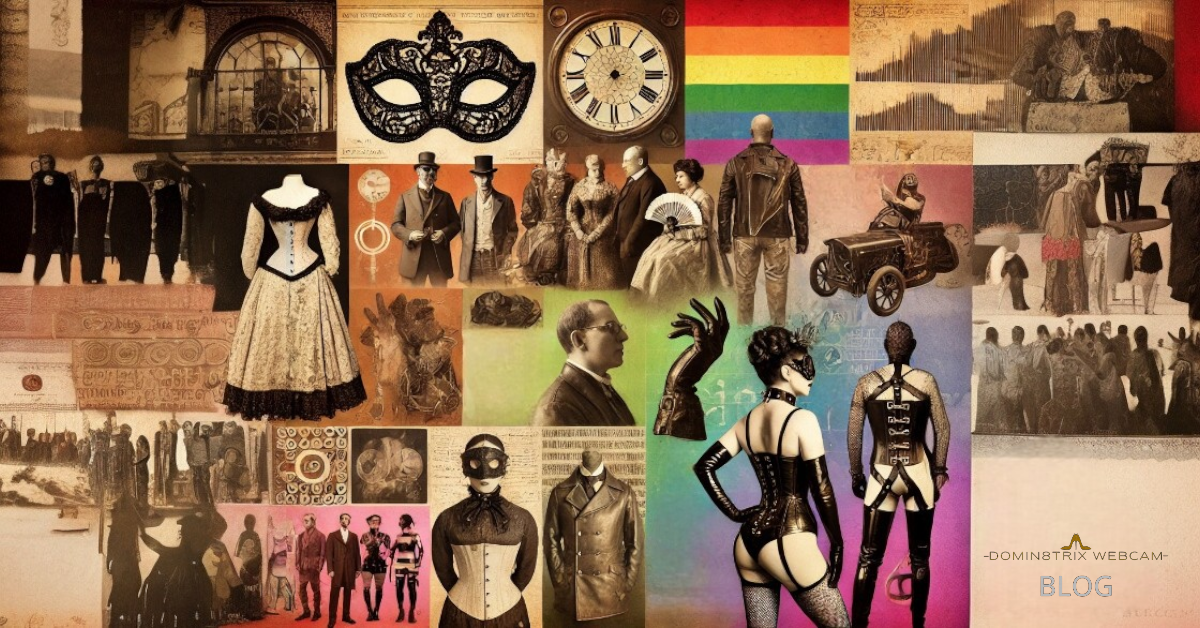Over the centuries, societal perceptions of BDSM (Bondage, Discipline, Dominance, Submission, Sadism, and Masochism) and fetish practices have undergone significant transformations—from being shrouded in taboo to achieving a degree of mainstream acceptance in contemporary culture.Wikipedia / The Harvard Crimson
Historical Context: From Secrecy to Subculture
Historically, practices now associated with BDSM were often concealed due to societal norms. In the mid-20th century, figures like Fakir Musafar emerged as pioneers in body modification and “modern primitive” movements, exploring practices such as branding and suspension. Musafar’s work, while not explicitly labeled as BDSM, shared parallels with the community’s emphasis on consensual exploration of pain and restraint. His contributions highlighted a subculture that began gaining visibility in the 1970s. The Guardian
The post-World War II era saw the rise of the gay leather community, which played a pivotal role in shaping modern BDSM culture. Returning soldiers formed motorcycle clubs that evolved into spaces embracing leather and kink aesthetics, laying the foundation for organized BDSM communities. Arcane Advice
Mainstream Media: From Margins to Spotlight
The portrayal of BDSM in mainstream media has evolved from subtle insinuations to explicit narratives. Early cinematic representations, such as the 1967 film “Belle de Jour,” touched on themes of dominance and submission. The 1986 release of “9½ Weeks” brought BDSM themes to a broader audience, albeit with a sensationalized lens. The 2002 film “Secretary” offered a more nuanced depiction, exploring the consensual dynamics of a dominant-submissive relationship. Wikipedia
The “Fifty Shades of Grey” series, debuting in 2011, catapulted BDSM into mainstream discourse, sparking both interest and criticism regarding its portrayal of consent and safety within BDSM practices.
Digital Platforms: Community Building and Education
The advent of the internet has been instrumental in demystifying BDSM and fetish practices. Online forums, educational websites, and social media platforms have facilitated discussions, allowing individuals to explore these interests safely and connect with like-minded communities. This digital shift has also enabled the dissemination of accurate information, challenging misconceptions and promoting safe practices.
Contemporary Acceptance: From Taboo to Exploration
Today, BDSM and various fetishes are increasingly acknowledged as facets of human sexuality. Workshops, educational events, and media representations have contributed to a more informed public perspective. For instance, the French article “Le BDSM pour tous : quand les goûters fessées se démocratisent” discusses the growing democratization and popularity of BDSM, influenced by cultural works and public figures. Le Monde.fr
This evolution reflects a broader cultural shift towards embracing diverse expressions of sexuality, moving away from stigmatization towards understanding and acceptance.
Conclusion
The journey of BDSM and fetish practices from societal taboo to mainstream conversation underscores the dynamic nature of cultural perceptions. As media representations become more nuanced and digital platforms foster community and education, society continues to evolve towards a more inclusive understanding of human sexuality.
For further reading on related topics, you might find these articles insightful:
The Global History of BDSM Since 3000 B.C.
A brief history of BDSM | Xtra Magazine
Mainstreaming kink: The politics of BDSM representation in U.S. popular media




Thank you for your sharing. I am worried that I lack creative ideas. It is your article that makes me full of hope. Thank you. But, I have a question, can you help me?
That means a lot — thank you for such kind words! 🌹 Creativity often comes from curiosity, and the fact that you’re exploring these ideas already shows that spark.
Of course, I’d be happy to help with your question — feel free to share it here or send it through our Contact Page
so I can give you a more personal response.
In the meantime, you might find inspiration in our article “The Art of Discovery: Embracing Curiosity in BDSM”
, which looks at how creative expression and exploration are central to the lifestyle.
Your article helped me a lot, is there any more related content? Thanks!
Thank you so much for reading and taking the time to comment! I’m really glad you found the article helpful. 🖤
If you’re interested in exploring more on this topic, you might enjoy some of our related pieces:
The Global History of BDSM Since 3000 B.C.
— a fascinating look at how kink has evolved across cultures and centuries.
Mainstreaming Kink: The Politics of BDSM Representation in Media
— examining how film and pop culture have shaped public perception.
Rituals of Obedience: The Beauty of Routine in BDSM
— exploring how rituals and structure create deeper connection and trust.
Keep an eye on our blog — we publish new insights weekly to keep the conversation (and curiosity) alive.